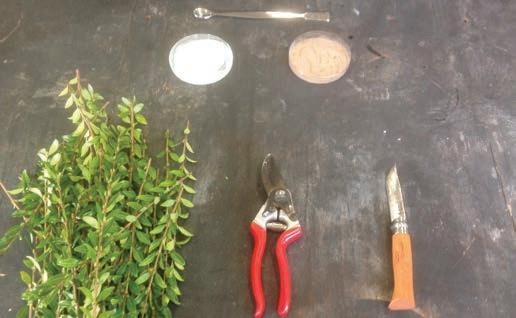06 / TEAGASC eZine
A sprout is not just for Christmas Brussels sprouts aren’t the most popular of vegetables – an annual outing with the Christmas turkey is most people’s experience of this delectable veg. A lot of damage was done to the humble sprout with the older varieties that were overpoweringly strong flavored. Realising they had a problem on their hands, plant breeders set about developing sprouts that were more palatable. The result was sweeter varieties that came on stream during the 1990s and strong tasting sprouts were banished forever. The name comes from the area they originated from, and was first recorded as a spontaneous variation of a cabbage plant in the Brussels region of Belgium around 1750. Sprouts reached France and England by 1800. Sprouts are a very specialised crop, grown by only a handful of growers. We grow around 430 acres of sprouts, most of which are machine harvested. They are in season from September to March. Brussels sprouts have a higher energy content than most leafy green vegetables. They’re high in fibre, contain useful amounts of iron and are rich in potassium, vitamins C and K, folic acid and manganese. ✽
Climate change The number of warm days has doubled in the last 50 years and winter temperatures are predicted to rise by 2 to 2.5°C by 2050. This is influencing the spread of plant disease. Approximately 10 to 16% of crop yields are lost to pests and disease. Several new pathogens have become problematic in recent years. Escallonia leaf spot (Septoria sp.), ash dieback (Chalara sp.) and white mould of daffodils (Ramularia sp.) are some current issues. Be vigilant by regularly checking your crops for signs of pests and disease. Knowing your enemy and its lifecycle is crucial these days where the choice of pesticide is limited. Teagasc offers a plant disease diagnostic service to its clients and is accessible through your local Teagasc horticultural advisor. ✽
Scheme of investment aid for Commercial Horticulture Sector As part of the recent October budget a provision of €5m was made for a horticultural grants scheme for 2017. At time of writing, communication from DAFM is that the scheme will be launched before the end of October, with a probable closing date of 16 December 2017. Approved investments should be completed no later than 29 September 2017. If you are availing of the two-year scheme, investments should be completed by September 2018. It’s likely that the overall aims of the scheme will not differ from last year, but you should read the terms and conditions and application form when released to ensure your proposed
Very berry season Growers were happy with the berry season this year. While volumes of fruit were down, prices held up well. Fruit quality was also excellent. Growers were getting concerned with the hot weather we had in the early part of June. Extreme temperatures stress soft fruit crops and growers alike. The return to the more typical Irish summer weather was very welcome. Growers also commented that sales of soft fruit are definitely on the up. People are more willing to spend again. The new variety from the UK, ‘Malling Centenary’ is cropping really well so far. Growers are delighted with the quality especially in terms of the percentage class 1 fruit. This is often in excess of 85%, which is excellent. More planting of this variety will take place next year. ✽
investment fits the scheme. Please contact your Teagasc adviser for assistance in completing the application process. Some points to note: ● Quotations should be recent and require a signature. An electronic signature is acceptable ●E nsure that quotations have adequate information to describe the proposed investment ● Please consider the priority order of investments, if multiple items are being requested ●P lease ensure that the proposed investment or equipment is horticulture specific ● Under no circumstances will late applications be accepted by DAFM. ✽
Annaveigh Plants Nursery Walk on 19 October We were very appreciative that John and Grainne Murphy at Annaveigh Plants in Tipperary were the first hosts of the new nursery walk initiative. Their nursery produces high quality bare root and rootballed and semi-mature trees. The event was very well supported by a wide selection of other growers. The planned discussion topics for the day included soil sampling, field nutrition, safe storage of chemicals and quality assurance. John and Grainne are always looking at improving their production system so this was a very interesting location to visit. One of the methods they have recently adopted was using marigold and mustard plants as break crops, to prevent nematodes and replant disorder. It also benefits by increasing soil organic matter. The discussion was free flowing and the mood was very positive looking at the start of the tree lifting season. Further nursery walks are being planned. Subscribe to the nursery bulletin, to keep up to date about upcoming events - https://goo.gl/i2K6fS. ✽
18
HORTICULTURECONNECTED / www.horticulture.ie / Autumn/Winter 2016











